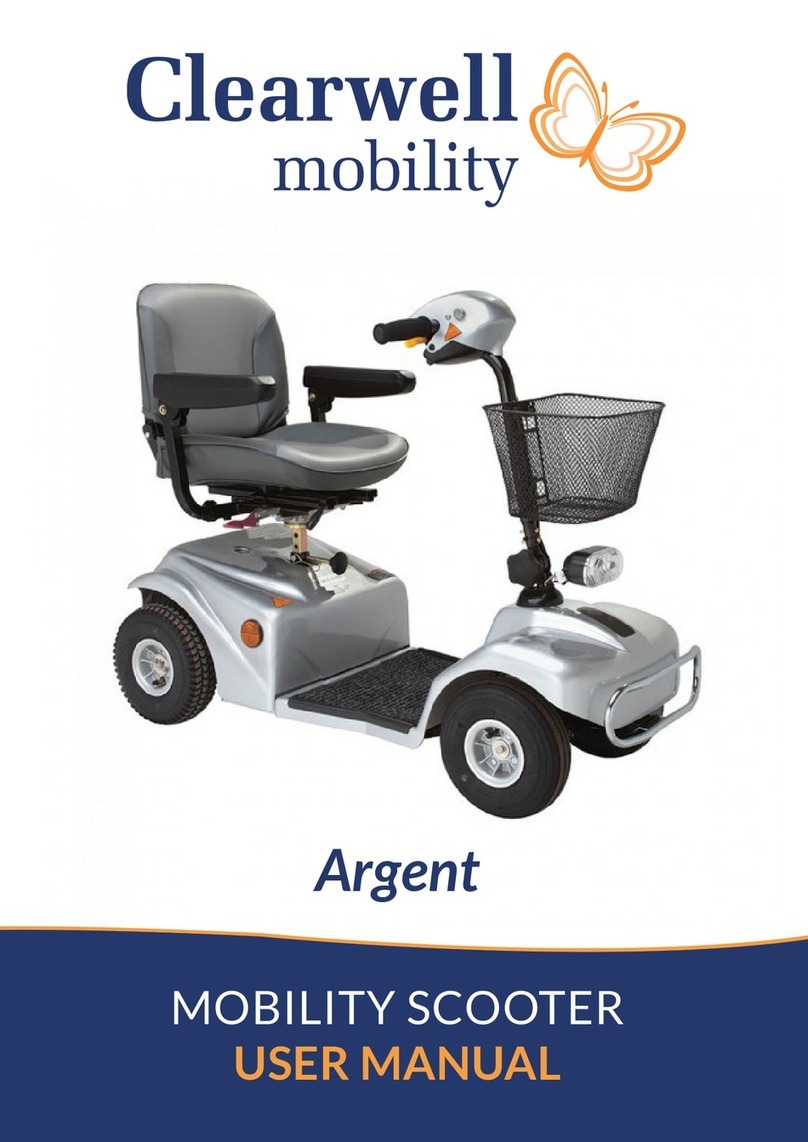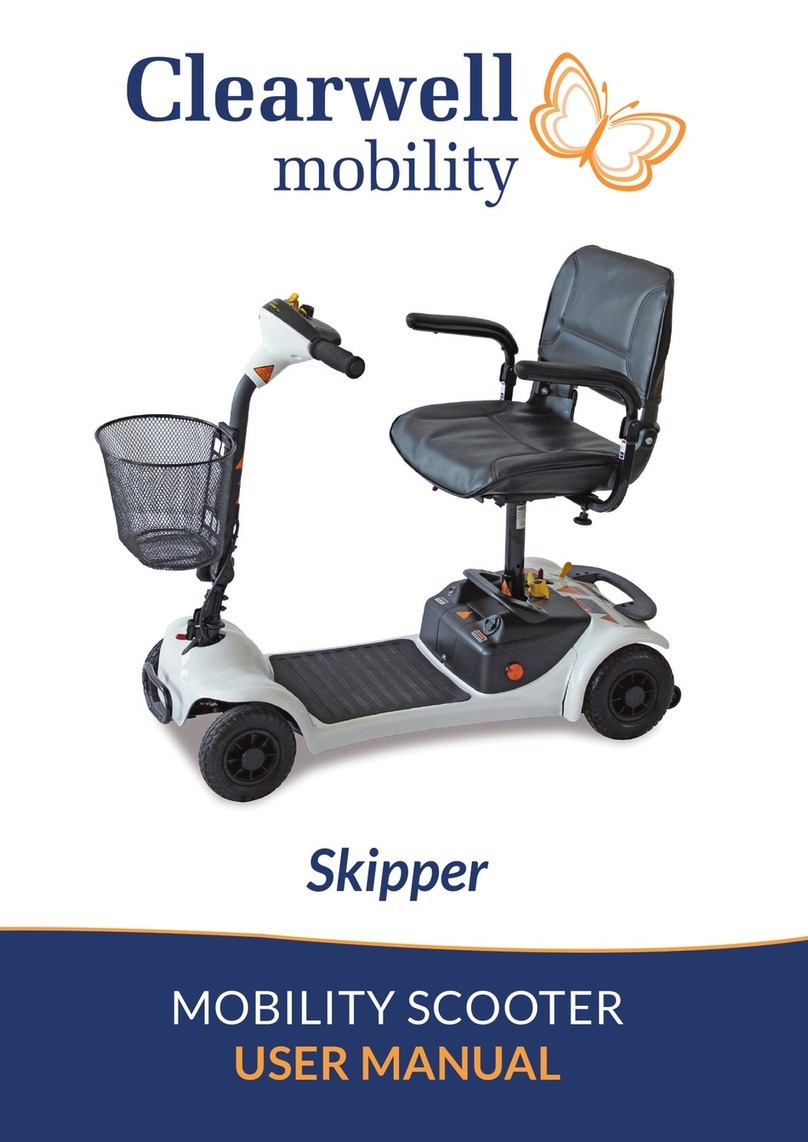
www.clearwellmobility.co.uk
8
Charging Your Batteries
• Turn off the scooter power and remove the
key
• Slide away the cover of the charger outlet
point positioned on the front of the battery box
or tiller charging port as shown.
• Put the charger plug into the outlet point.
• Do not switch on the battery charger until all
the plugs are in position.
• The LED light on the battery charger will show
amber when charging. The LED light on the
battery charger will show green when the
batteries are fully charged.
Battery Charging
• Turn off the mains power to the charger before removing the charger plug from the
charging outlet.
WARNING: Never attempt to open or disassemble the charger, risk of explosion and
electric shock if batteries are charged when incorrectly wired. Also, risk of electric
shock and damage to the battery if it gets wet.
General Information
• Your scooter requires 2x lead acid batteries that are sealed and maintenance free.
They are recharged by the supplied off-board charging system or via the tiller charging
port.
•Fully charge your travel scooters batteries 10-12 hours before using it for the rst
time. Charge the batteries daily after every discharge even after partly discharge.
• If the battery indicator has reached the red LED, charge the batteries for 16 hours
minimum, ignoring the charge complete display.
• Even if the scooter is unused for a long period of time, the batteries should have a 24
hour charge once a week to ensure both batteries are fully charged.
• Do not charge your batteries under extreme temperatures, high temperatures above
30ºc are not recommended as well as low temperatures under 10ºc.
EMI/RFI
All electrically powered vehicles, including scooters are susceptible to
Electromagnetic Interference / Radio Frequency Interference (EMI / RFI). This
interference could result in abnormal, unintended movement of your scooter. The FDA
has determined that each make and model of scooter can resist EMI / RFI to a certain
level. This product has been tested and has passed an immunity level of 20 V/m.

































